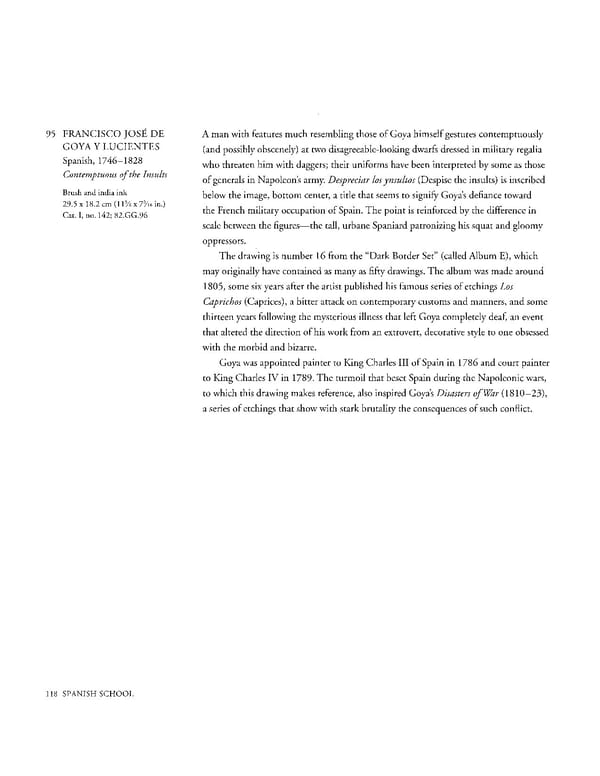95 FRANCISCO JOSE DE A man with features much resembling those of Goya himself gestures contemptuously GOYA Y LUCIENTES (and possibly obscenely) at two disagreeablelooking dwarfs dressed in military regalia Spanish, 17461828 who threaten him with daggers; their uniforms have been interpreted by some as those Contemptuous of the Insults of generals in Napoleon's army. Despreciar los ynsultos (Despise the insults) is inscribed Brush and india ink below the image, bottom center, a title that seems to signify Goya's defiance toward 29.5 x 18.2 cm (1 1 x 7 3/16 in.) the French military occupation of Spain. The point is reinforced by the difference in Cat. I, no. 142; 82.GG.96 scale between the figures—the tall, urbane Spaniard patronizing his squat and gloomy oppressors. The drawing is number 16 from the "Dark Border Set" (called Album E), which may originally have contained as many as fifty drawings. The album was made around 1805, some six years after the artist published his famous series of etchings Los Caprichos (Caprices), a bitter attack on contemporary customs and manners, and some thirteen years following the mysterious illness that left Goya completely deaf, an event that altered the direction of his work from an extrovert, decorative style to one obsessed with the morbid and bizarre. Goya was appointed painter to King Charles III of Spain in 1786 and court painter to King Charles IV in 1789. The turmoil that beset Spain during the Napoleonic wars, to which this drawing makes reference, also inspired Goya's Disasters of War (181023), a series of etchings that show with stark brutality the consequences of such conflict. 118 SPANISH SCHOOL
 Masterpieces of the Getty Museum: Drawings Page 118 Page 120
Masterpieces of the Getty Museum: Drawings Page 118 Page 120